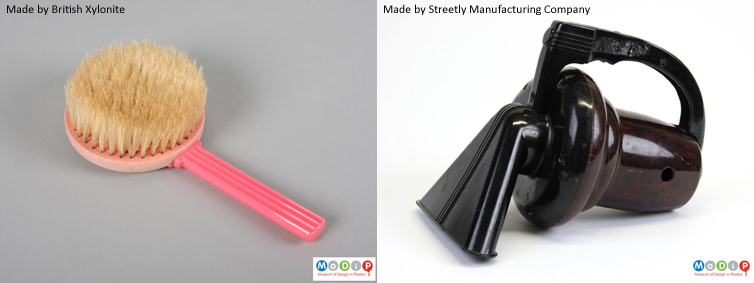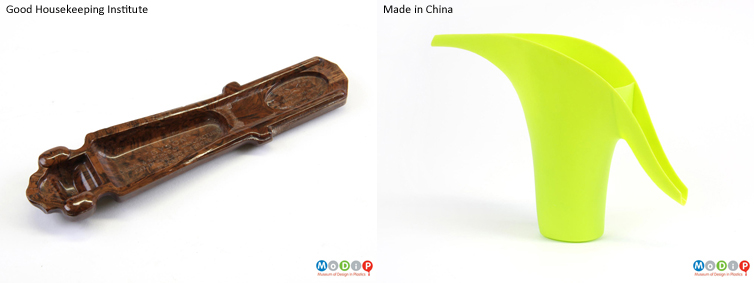Choosing the Ten
Selecting objects with which to play 10 Most Wanted has been much more demanding than I expected. The idea for the research project came from the fact that when the MoDiP collection became available on line through the website built for us by Adaptive Technologies, Phil, our lead contact there, was astonished by how often the word ‘unknown’ appeared against an object’s designer, manufacturer, country of manufacture or date. Sometimes we are even unsure of the specific plastic from which a product is made and its method of manufacture. You would have thought, therefore, with such a wealth of objects from which to choose, it would have been a simple matter of putting together a list with enough variety to appeal to a wide range of audiences. But not so, for, of course, we want our players to have some chance of success. If an object is completely anonymous it would be a matter of pure luck if someone recognised it. We need there to be something to provide a lead that will help get our researchers going. In most cases therefore we have chosen objects about which something is known.
To some extent the selection has been informed by the people we think may have the information we require, like people who work or have worked in the plastics industry. Thus, we will be including objects by leading manufacturing companies from the past, for example British Xylonite and Streetly Manufacturing Company. And we will also be singling out particular sorts of objects that often have a large plastic content such as radios and kettles, with a view to attracting people from those industries or people with a fascination with company archives.

We will also include objects bearing information such as patent or design numbers. An example is a set of stair carpet clips that have moulded on their undersides: ‘Byson Design and method of manufacture Pat. in England & Abroad No. 392800. Tested and approved. Serial 924. Good Housekeeping Institute. Conducted by Good Housekeeping Magazine.’ Lots of leads there you might think but we have failed to make sense of any of them. But such research can be very time-consuming and we have not been able to explore all the avenues. Hopefully someone will play the game who has that extra bit of information that enables them to know how to track down some answers.

Then there is the ‘Made in China’ or some other part of Asia issue. So many products are made there and often they are among the most anonymous of objects. The problem is compounded by the dearth of information available about this aspect of the plastics manufacturing industry. We hope by regularly featuring such objects we will gain a player who knows his or her way around it and is able to guide us through this particularly difficult territory.


 #10
#10 #10;</body></html>" />
#10;</body></html>" />

